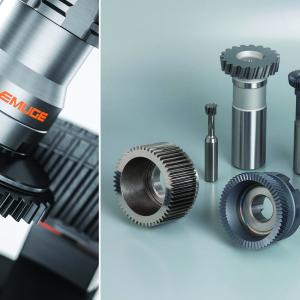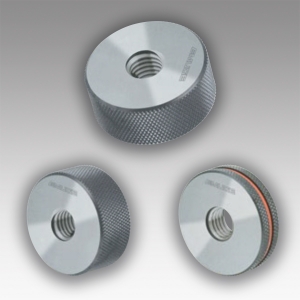Contact Details

EMUGE-FRANKEN USA, a leading manufacturer of high-performance taps, thread mills, end mills, drills, gages and other rotary tools, announced it has expanded its precision thread gages line with new TIN Coated Gages featuring 3B class-of-fit, ensuring critical tolerance is met. The TIN coating also ensures extreme wear resistance for safety critical aerospace and medical applications, and in other demanding environments.
EMUGE TIN Coated Thread Gages have high dimensionally stable HSS construction with TIN coating that increases hardness and wear resistance, which extends lifespan and reduces the frequency of calibrations and replacements, saving time and cost. By minimizing friction, EMUGE TIN Coated Gages offer consistent measurements and precision thread sizing. Also, the TIN coating provides a protective barrier against abrasion and corrosion, even in hard or abrasive materials, and harsh environments. EMUGE TIN Coated Gages are available with a 3B class-of-fit in sizes #4 through 1" UNC/ UNF and metric sizes.
“We are pleased to expand our line of precision thread gages with new, highly durable TIN Coated Gages which offer improved accuracy when gaging a range of threading applications, such as challenging, precise aerospace and medical threaded holes,” said Mr. Robert Adamiak, Sales Support Specialist, EMUGE-FRANKEN USA.
Related Glossary Terms
- abrasive
abrasive
Substance used for grinding, honing, lapping, superfinishing and polishing. Examples include garnet, emery, corundum, silicon carbide, cubic boron nitride and diamond in various grit sizes.
- hardness
hardness
Hardness is a measure of the resistance of a material to surface indentation or abrasion. There is no absolute scale for hardness. In order to express hardness quantitatively, each type of test has its own scale, which defines hardness. Indentation hardness obtained through static methods is measured by Brinell, Rockwell, Vickers and Knoop tests. Hardness without indentation is measured by a dynamic method, known as the Scleroscope test.
- high-speed steels ( HSS)
high-speed steels ( HSS)
Available in two major types: tungsten high-speed steels (designated by letter T having tungsten as the principal alloying element) and molybdenum high-speed steels (designated by letter M having molybdenum as the principal alloying element). The type T high-speed steels containing cobalt have higher wear resistance and greater red (hot) hardness, withstanding cutting temperature up to 1,100º F (590º C). The type T steels are used to fabricate metalcutting tools (milling cutters, drills, reamers and taps), woodworking tools, various types of punches and dies, ball and roller bearings. The type M steels are used for cutting tools and various types of dies.
- threading
threading
Process of both external (e.g., thread milling) and internal (e.g., tapping, thread milling) cutting, turning and rolling of threads into particular material. Standardized specifications are available to determine the desired results of the threading process. Numerous thread-series designations are written for specific applications. Threading often is performed on a lathe. Specifications such as thread height are critical in determining the strength of the threads. The material used is taken into consideration in determining the expected results of any particular application for that threaded piece. In external threading, a calculated depth is required as well as a particular angle to the cut. To perform internal threading, the exact diameter to bore the hole is critical before threading. The threads are distinguished from one another by the amount of tolerance and/or allowance that is specified. See turning.
- titanium nitride ( TiN)
titanium nitride ( TiN)
Added to titanium-carbide tooling to permit machining of hard metals at high speeds. Also used as a tool coating. See coated tools.
- tolerance
tolerance
Minimum and maximum amount a workpiece dimension is allowed to vary from a set standard and still be acceptable.
- wear resistance
wear resistance
Ability of the tool to withstand stresses that cause it to wear during cutting; an attribute linked to alloy composition, base material, thermal conditions, type of tooling and operation and other variables.











 PRODUCTS
PRODUCTS

